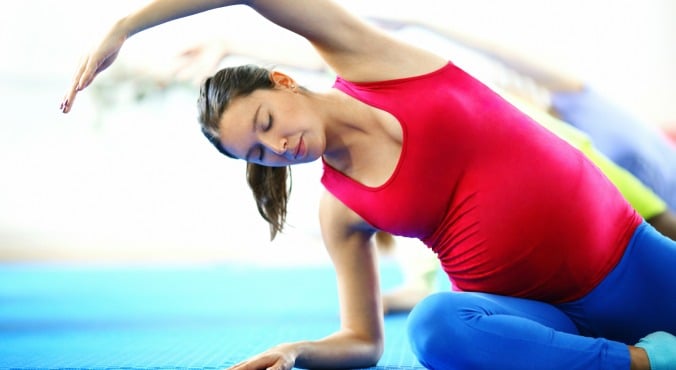
Image via iStock.
When it comes to exercising and pregnancy, many women are left conflicted, confused and full of questions.
Is it safe to exercise? What kind of exercise? Is there a certain stage where I should stop?
The answer is yes – but with certain safety measures in mind. Staying active during pregnancy is perfectly safe, healthy and helps you prepare for arguably the hardest race of your life: labour.
RELATED: Teresa Palmer’s go-to pregnancy workout
Of course, it all starts (and ends) with stretching. We asked personal trainers and fitness experts to reveal the seven best stretches for pregnant women.
The most important thing to remember is that nothing should feel painful. You want to feel the stretch, but it should be no more than uncomfortable at best. If it’s not, stop immediately.
1. Lower Back Stretch
According to personal trainer and health coach Kristy Curtis, the lower back and in particular the lumbar spine can get very sore during the second and third trimester due to the increased weight at the front of the body. A pelvic rock is an effective stretch that can ease any lower back pain.
How: Sit on an exercise ball with your feet firmly placed on the ground. Sitting up tall with good posture, gently rock your pelvis from side to side to ease any tightness through the hips and back.
RELATED: Erin McNaught just revealed the most surprising celebrity exercise tip we’ve heard

